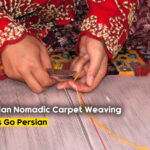
From Nomads to Artisans: The Evolution of Carpet Weaving in Iran

The Role of Persian Carpets in Films
Persian carpets are renowned for their intricate designs, vibrant colors, and deep symbolism. More than just decorative items, they are a canvas for artistic expression and cultural storytelling. A significant portion of Persian carpet motifs draws inspiration from religion and mythology, with patterns that reflect both Islamic traditions and ancient Persian myths. These designs often carry spiritual meanings, portraying themes of paradise, protection, and divine order. In this post, we will explore how religion and mythology have shaped Persian carpet designs, uncovering the cultural and symbolic layers woven into these masterpieces.
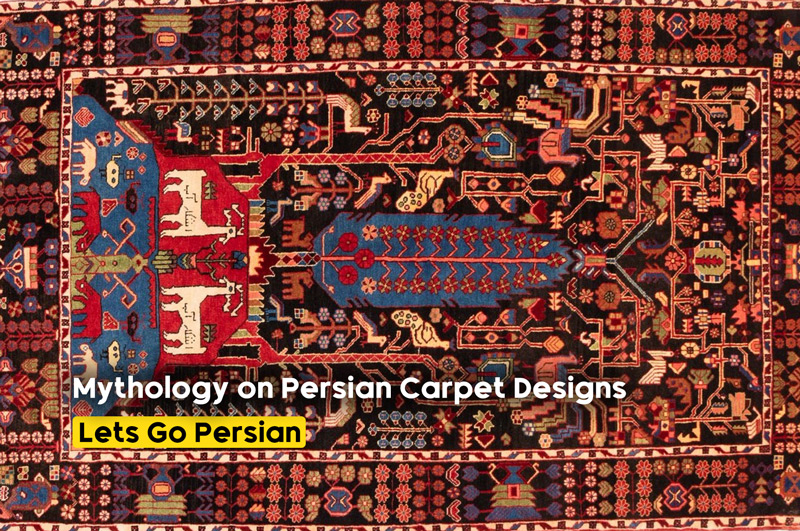
The Influence of Religion and Mythology on Persian Carpet Designs
1. The Role of Islam in Persian Carpet Designs
Islamic Art and the Prohibition of Figurative Representation
One of the defining features of Islamic art is the avoidance of figurative representations in religious contexts. This principle, based on the belief that only God can create living beings, has profoundly influenced Persian carpet designs, particularly those intended for religious or sacred spaces.
- Geometric Patterns: Geometric designs are a cornerstone of Islamic art, symbolizing the infinite nature of God and the underlying order of the universe. Persian carpets often feature complex geometric patterns, such as stars, hexagons, and repeated interlocking shapes, which are seen as reflections of divine order.
- Symmetry and Balance: In Islamic culture, symmetry is associated with the perfection of creation. Many Persian carpets exhibit perfect symmetry, with balanced, mirrored designs that suggest harmony and unity—values central to Islamic thought.
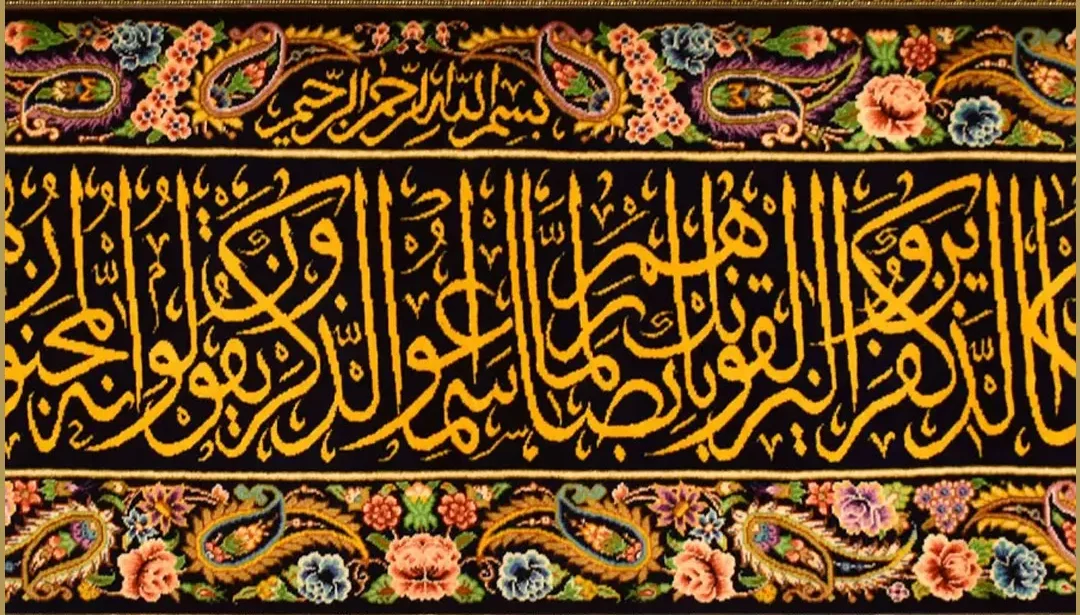
Islamic Calligraphy
The Garden of Paradise: Representation of Heaven
One of the most common themes in Persian carpets influenced by Islam is the depiction of paradise or the Garden of Eden. In Islamic tradition, paradise is described as a lush, beautiful garden filled with trees, rivers, flowers, and fruits, symbolizing eternal peace and divine grace. This idea is beautifully woven into Persian garden carpets, also known as Golestan or Bagh carpets.
- Floral Motifs: Carpets featuring intricate floral patterns, blooming trees, and lush foliage are representations of the garden of paradise. Flowers such as lotuses, roses, and tulips are common motifs, symbolizing purity, beauty, and spiritual awakening.
- Water Features: Islamic descriptions of paradise include flowing rivers and fountains, often reflected in carpet designs. Some carpets feature symmetrical pools or streams, surrounded by trees and flowers, creating an image of eternal bliss and abundance.
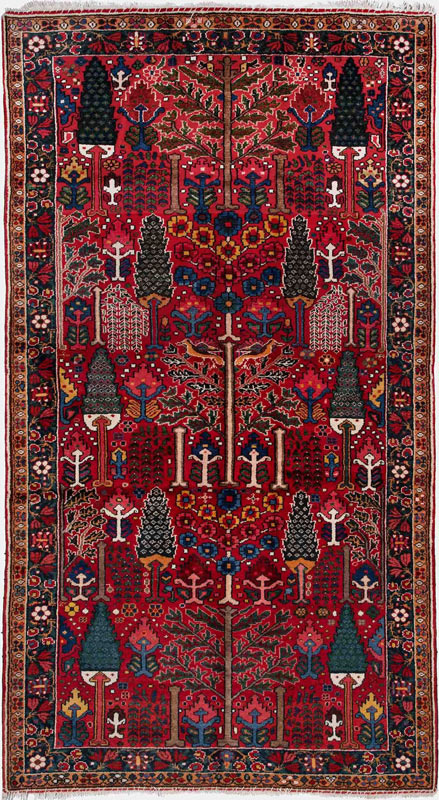
Floral & Garden Pattern
Mihrab and Prayer Rugs
In Islamic culture, carpets are also used for prayer, and special designs are created for prayer rugs (called sajjadah). The most important feature of a prayer rug is the Mihrab, a niche or arch-shaped design that indicates the direction of Mecca, guiding the worshipper during prayer.
- Mihrab Design: The Mihrab design in prayer rugs is symbolic of a gateway to the divine. It is often adorned with floral and geometric patterns, emphasizing the spiritual significance of the connection between the individual and God.
- Lantern and Mosque Designs: Some prayer rugs include additional motifs, such as hanging lanterns or mosque architecture, reinforcing the sacred nature of the space where prayer takes place.
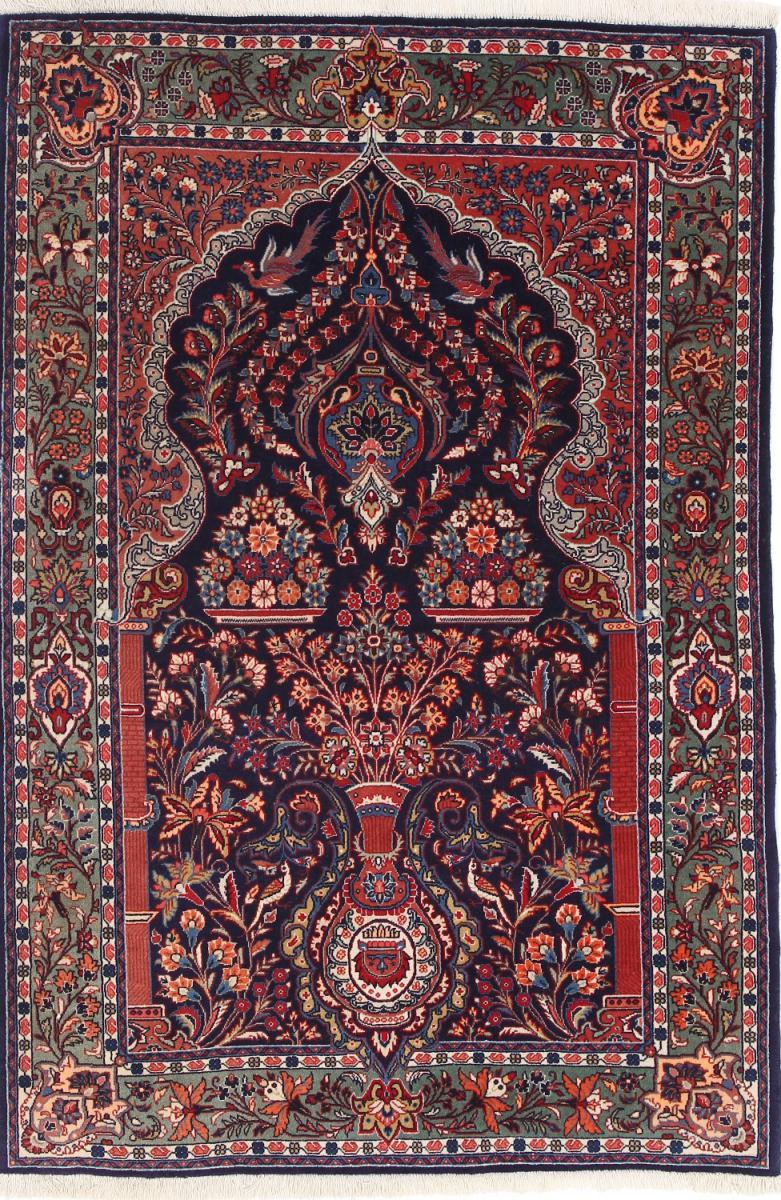
Arches and Mihrab
2. The Influence of Ancient Persian Mythology
Zoroastrianism and Symbolism of Light
Before the advent of Islam, Zoroastrianism was the dominant religion in ancient Persia. Zoroastrianism emphasized the duality between good and evil, light and darkness, with light symbolizing truth and divine wisdom. This focus on light is often reflected in Persian carpets through the use of vibrant colors, such as bright reds, yellows, and oranges, symbolizing the energy of the sun and the power of divine light.
- Sun and Fire Motifs: In ancient Persian mythology, the sun was associated with Mithra, a god of light, truth, and justice. Sunbursts and fire symbols are sometimes incorporated into carpet designs, paying homage to the ancient Zoroastrian belief in the sacredness of light.
- Simurgh: The Simurgh, a mythical bird representing wisdom, healing, and immortality, is another Zoroastrian symbol found in Persian carpets. Often depicted with outstretched wings, the Simurgh signifies protection and guidance, embodying the ancient Persian belief in divine intervention and benevolence.
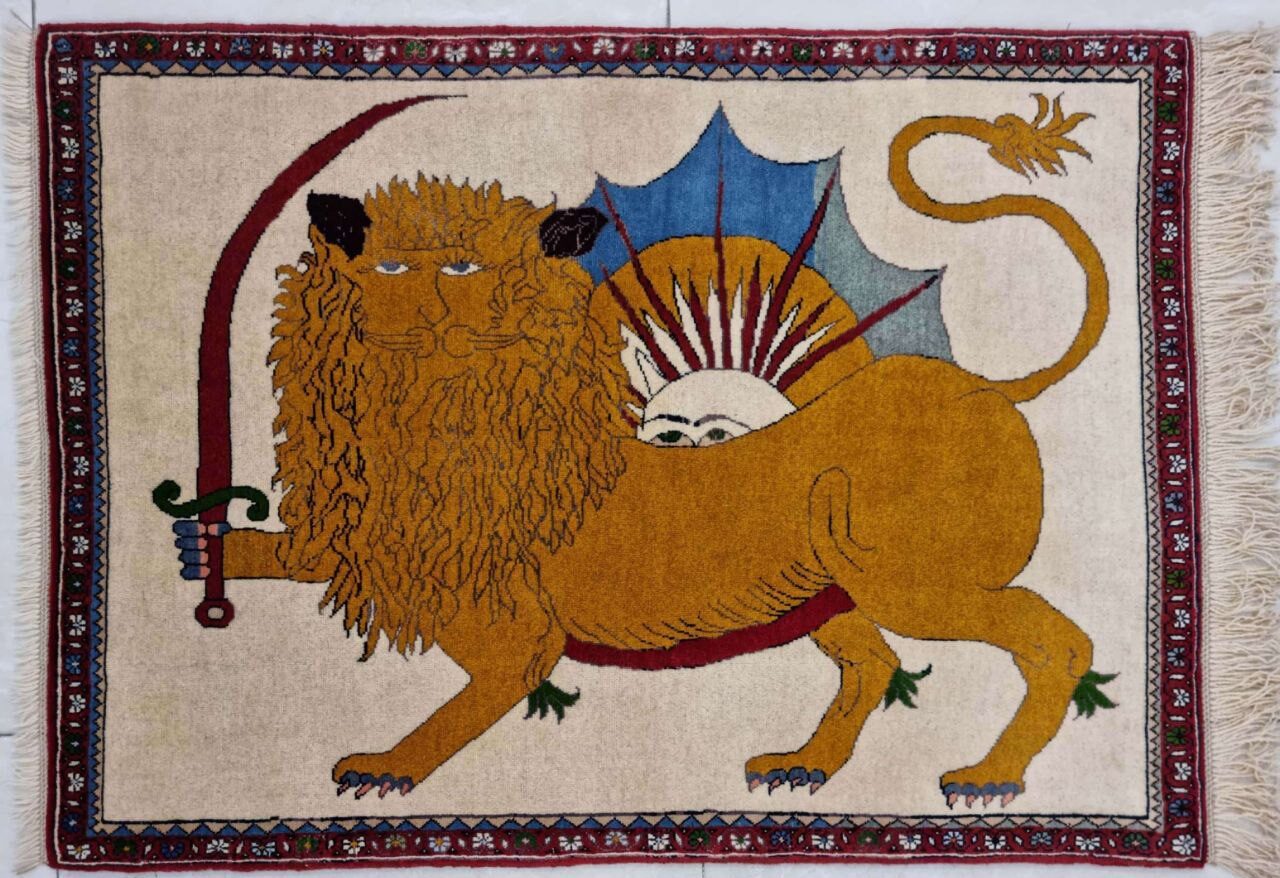
Sun and Fire Motifs
The Tree of Life
The Tree of Life is a prominent motif in both Zoroastrian and Islamic symbolism, and it frequently appears in Persian carpet designs. This ancient symbol represents eternity, fertility, and the connection between the earthly and divine realms.
- Growth and Rebirth: In Zoroastrian mythology, the Tree of Life is associated with rebirth and the cycle of life, death, and renewal. In Persian carpets, the Tree of Life is often depicted as a central element, with branches spreading outwards, symbolizing growth and spiritual ascension.
- Connection to Heaven: In Islamic art, the Tree of Life can also symbolize the connection between the material world and heaven, reflecting the idea that all life ultimately returns to its divine source.
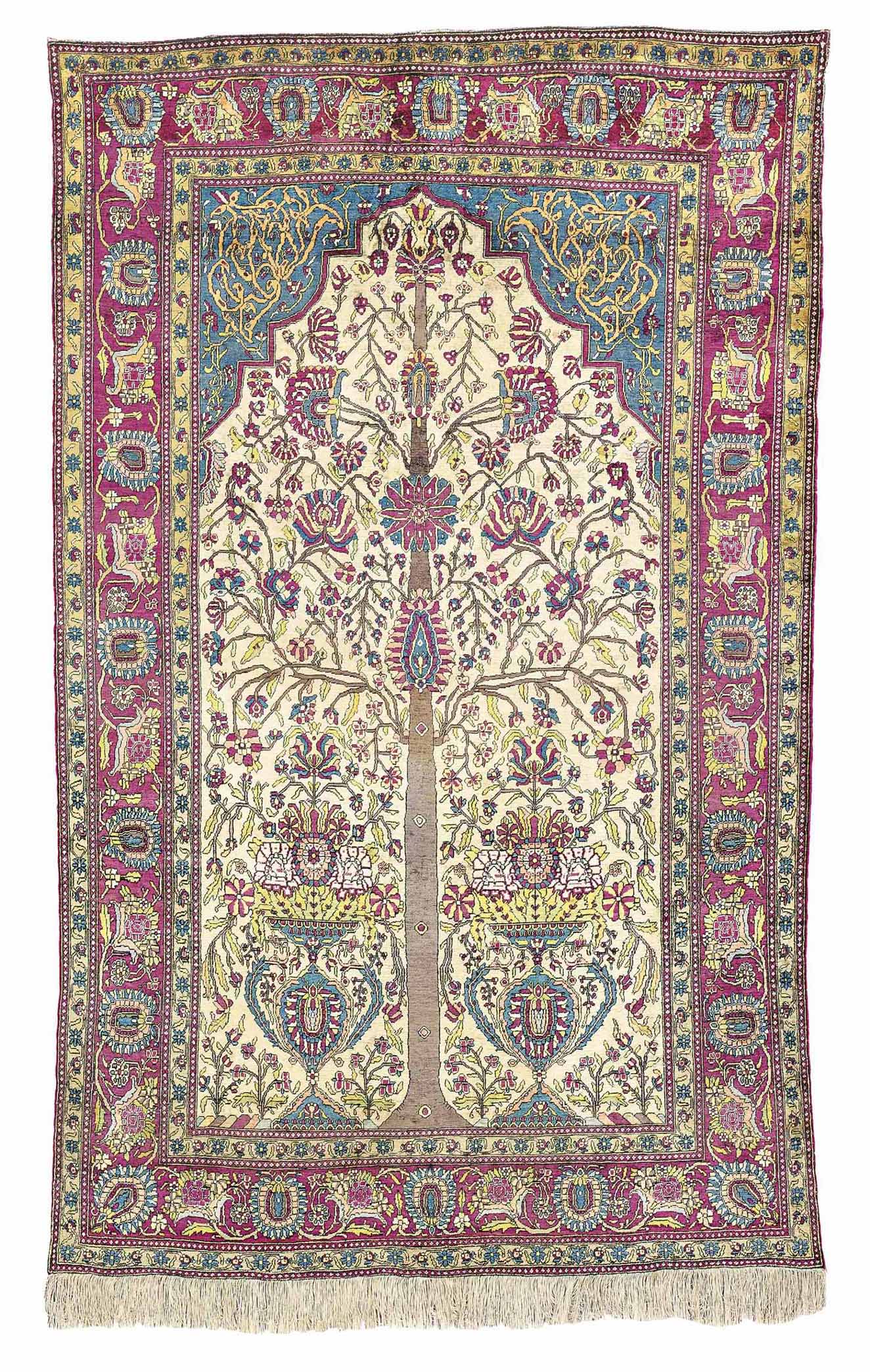
The Tree of Life
Animal Motifs in Persian Mythology
Ancient Persian mythology is rich with symbolic animals, many of which appear in Persian carpet designs. These animals often carry deep symbolic meanings, representing various qualities such as power, protection, and wisdom.
- Lions: The lion is a common symbol in Persian mythology, associated with royalty, strength, and protection. In Persian carpets, lions often appear as guardians, symbolizing power and the defense of sacred spaces.
- Dragons and Serpents: Dragons and serpents are also recurring motifs in Persian mythology, often representing the battle between good and evil. These creatures appear in both tribal carpets and urban designs, symbolizing protection and the struggle against malevolent forces.
- Deer and Gazelles: These gentle animals often symbolize grace, innocence, and beauty. They are frequently depicted in Persian carpets, especially in designs inspired by hunting scenes or nature, reflecting the peaceful, harmonious side of Persian mythology.
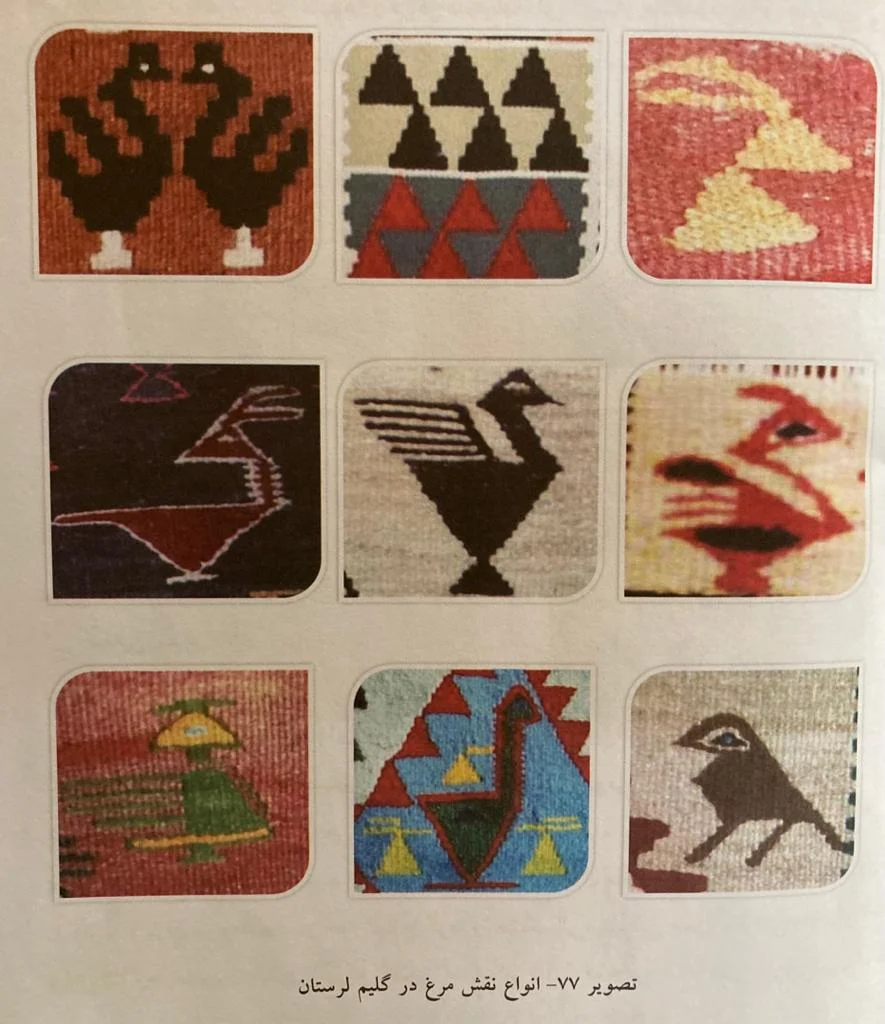
Animal Motifs
3. The Use of Sacred Geometry
Geometric Patterns as Divine Symbols
Sacred geometry plays a central role in Persian carpet designs, reflecting the belief that the universe operates according to mathematical principles set by a divine creator. The use of repeated geometric patterns in carpets serves as a metaphor for the infinite nature of God, while also creating a sense of order, harmony, and balance.
- Stars and Circles: The star and circle are common geometric patterns in Persian carpets, symbolizing eternity and perfection. Stars represent the divine light and guidance from above, while circles convey the unity and wholeness of the cosmos.
- Repeating Patterns: Repeating geometric designs, such as hexagons, diamonds, and tessellations, are used to represent the continuous cycle of life and the infinite power of creation.
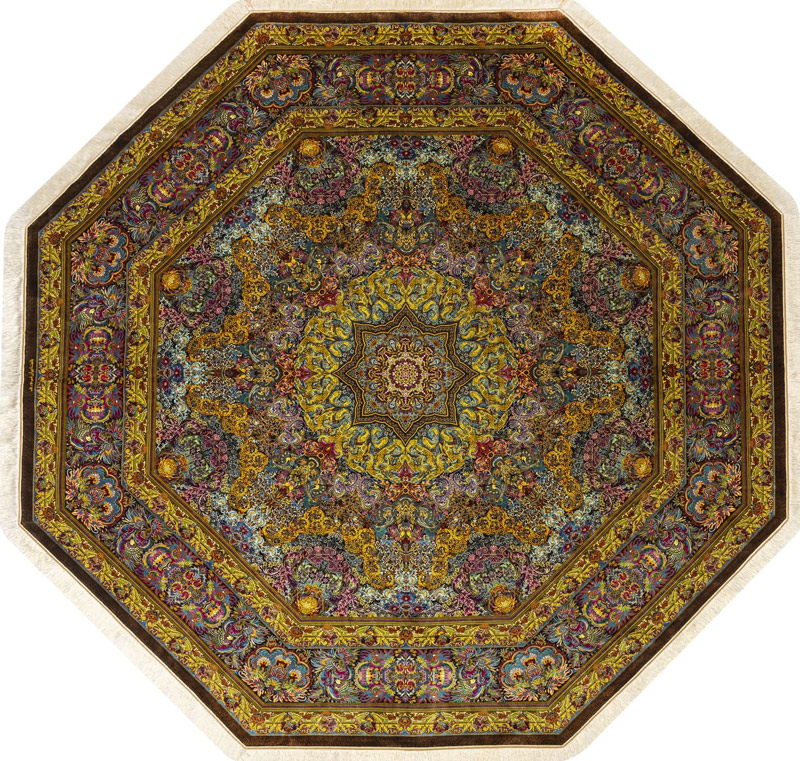
Stars and Hexagons
Mandalas and Medallions
In Persian carpets, mandalas and central medallions are often featured in the design, symbolizing spiritual wholeness and the order of the universe.
- Cosmic Symbolism: A central medallion in a Persian carpet often represents the cosmic center, surrounded by symmetrical patterns that radiate outwards, mimicking the structure of the universe. This design draws the viewer’s attention to the center, reflecting the belief that all things revolve around a divine power.
- Balance and Harmony: The mandala-like designs of Persian carpets emphasize balance and harmony, not only in the physical appearance of the carpet but also in their symbolic representation of the divine order of the world.
4. Mysticism and Sufi Influence
Sufi Mysticism in Persian Carpet Designs
Sufism, the mystical branch of Islam, has deeply influenced Persian culture and art, including carpet designs. Sufi philosophy emphasizes the pursuit of a personal connection with the divine, often using symbolic imagery to convey spiritual truths.
- Spiritual Journey: Some Persian carpets reflect the Sufi concept of the spiritual journey, where the soul moves closer to God through a series of spiritual stages. This is often represented through labyrinthine patterns or repeated geometric designs, symbolizing the journey of the soul through the complexities of life.
- The Whirling Dervish: Although rarely depicted directly in carpets due to Islamic prohibitions on human representation, the whirling dervish—a symbol of spiritual ecstasy in Sufi tradition—is sometimes alluded to through circular, swirling designs that evoke a sense of spiritual movement and unity with the divine.
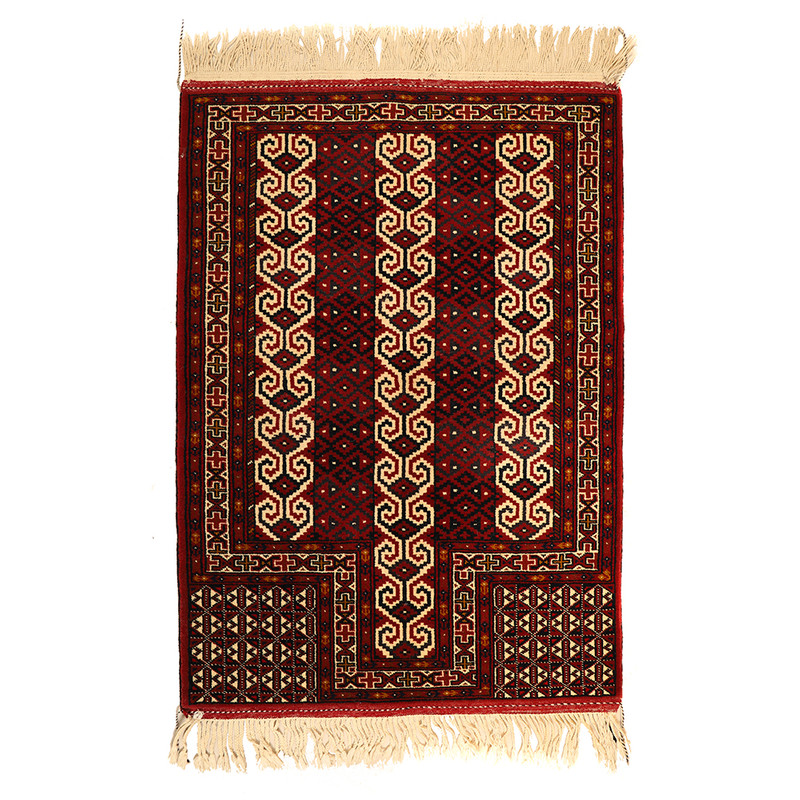
prayer mats
5. The Fusion of Religious and Mythological Symbols
The combination of Islamic and Pre-Islamic Traditions
Persian carpet designs often reflect a fusion of Islamic motifs and pre-Islamic mythology, creating a rich tapestry of spiritual and cultural symbolism. This blending of influences is seen in carpets that combine Islamic geometric patterns with Zoroastrian symbols, such as the Simurgh or the Tree of Life, showing the continuity between ancient Persian beliefs and later Islamic traditions.
- Blending of Motifs: Carpets that incorporate both Islamic sacred geometry and mythological animal figures demonstrate how Persian weavers have harmonized the different layers of Iran’s religious and cultural history into their artistic expressions.
- Eternal Themes: Themes such as good vs. evil, divine light, and spiritual growth are universal to both Zoroastrian and Islamic traditions and are often interwoven into Persian carpet designs, reflecting the eternal human quest for meaning and connection with the divine.
Conclusion
Persian carpets are far more than beautiful pieces of art; they are rich in religious symbolism and mythological meaning, reflecting the spiritual beliefs and cultural heritage of Iran. From the Islamic influence of geometric patterns and paradise gardens to the ancient Persian mythology of the Simurgh and Tree of Life, Persian carpets tell stories of divine order, protection, and spiritual journeys. By weaving together both Islamic and pre-Islamic traditions, Persian carpets continue to serve as a cultural bridge, connecting the past with the present, and the material world with the divine.



















